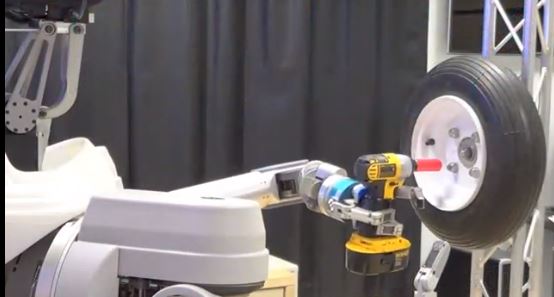

| Visitors Now: | |
| Total Visits: | |
| Total Stories: |

| Story Views | |
| Now: | |
| Last Hour: | |
| Last 24 Hours: | |
| Total: | |
Robot Changes Tire, Takes High Level Voice Commands
The Autonomous Robotic Manipulation (ARM) program is creating manipulators with a high degree of autonomy capable of serving multiple military purposes across a wide variety of application domains. Current robotic manipulation systems save lives and reduce casualties, but are limited when adapting to multiple mission environments and need burdensome human interaction and lengthy time durations for completing tasks.
ARM seeks to enable autonomous manipulation systems to surpass the performance level of remote manipulation systems that are controlled directly by a human operator. The program will attempt to reach this goal by developing software and hardware that enables robots to autonomously grasp and manipulate objects in unstructured environments, with humans providing only high-level direction.
The ARM program consists of three tracks: software, hardware and outreach. The hardware track focuses on design and development of low-cost dexterous multi-fingered hands taking advantage of recent manufacturing advancements. The software track focuses on developing new algorithms and approaches for grasping and manipulation using local sensors for perception. The outreach track engages a larger community by placing robotic systems in public museums (presently the National Air and Space Museum) and also encouraging unfunded participants to develop algorithms robot autonomy through the web to a real system.



